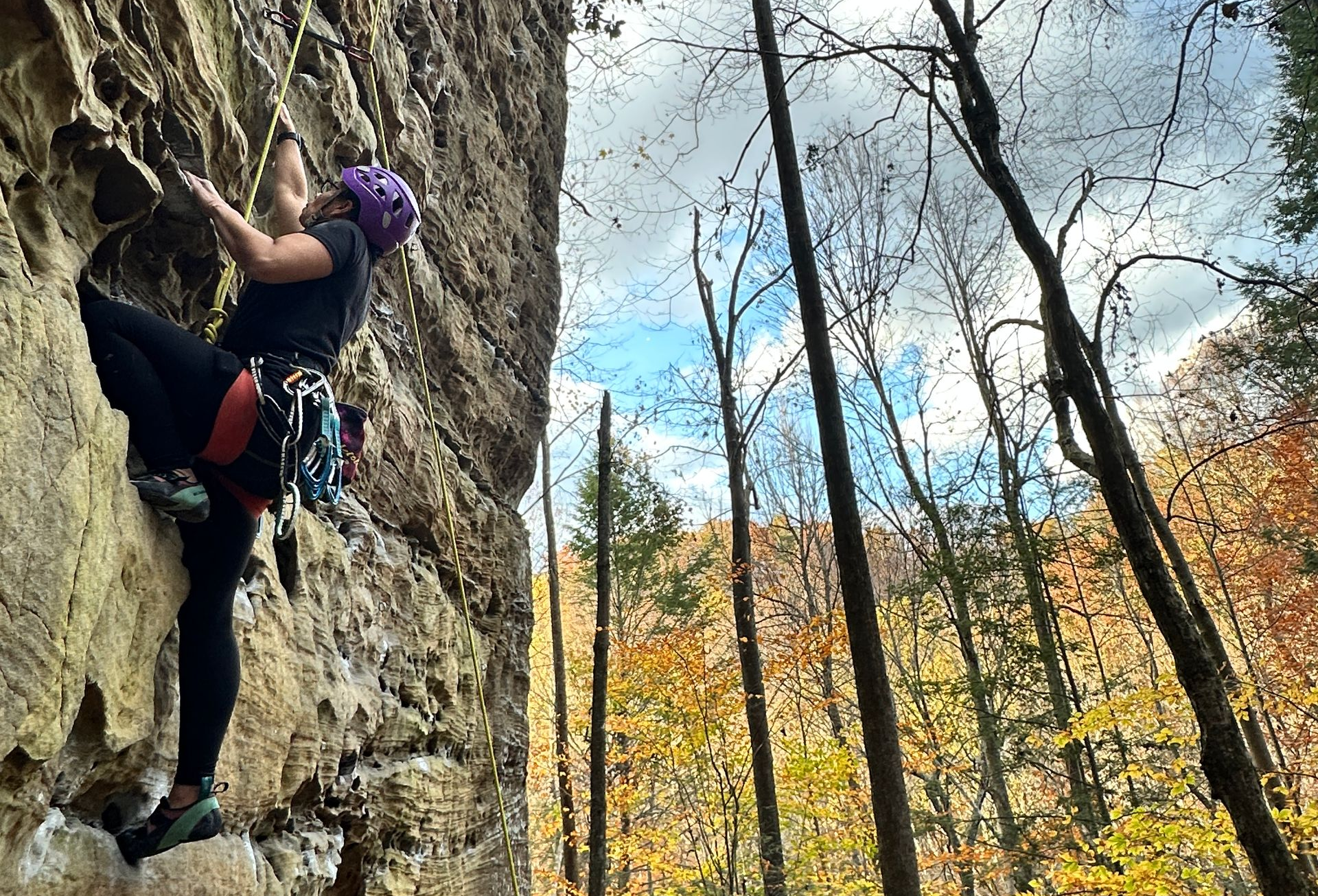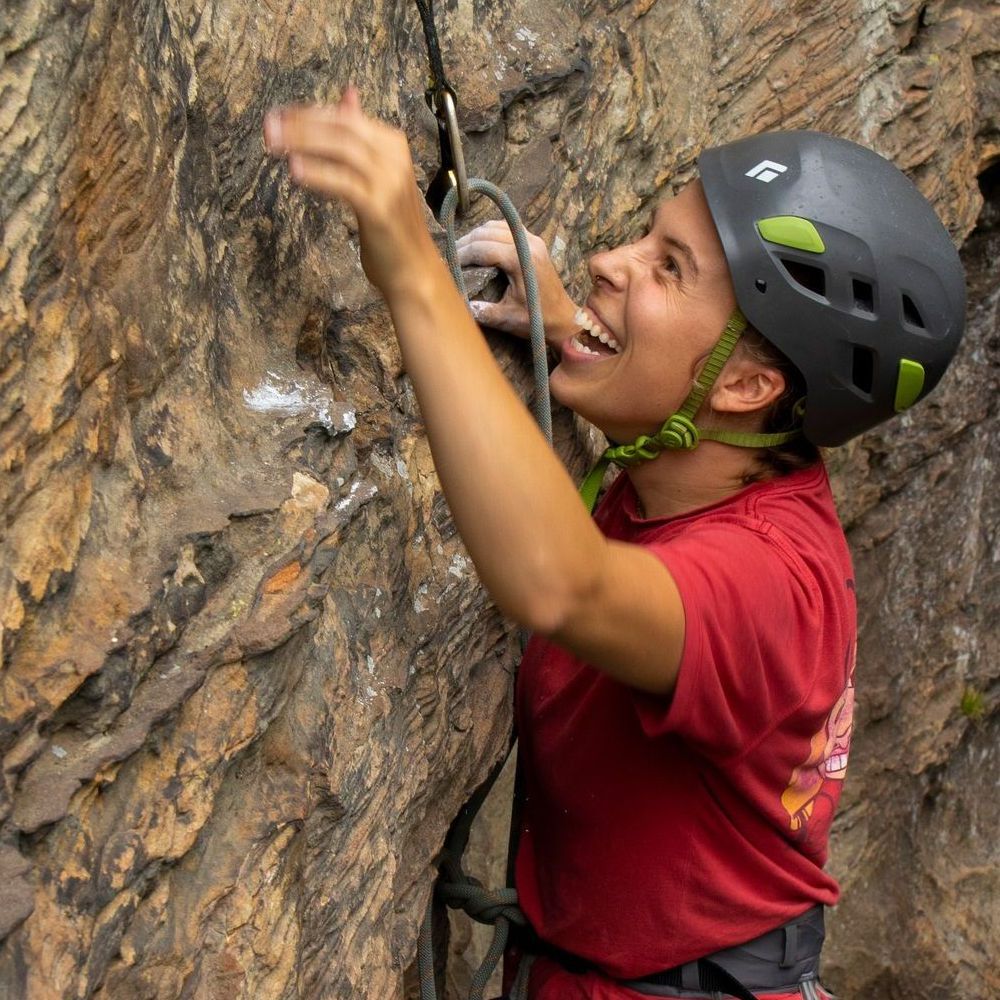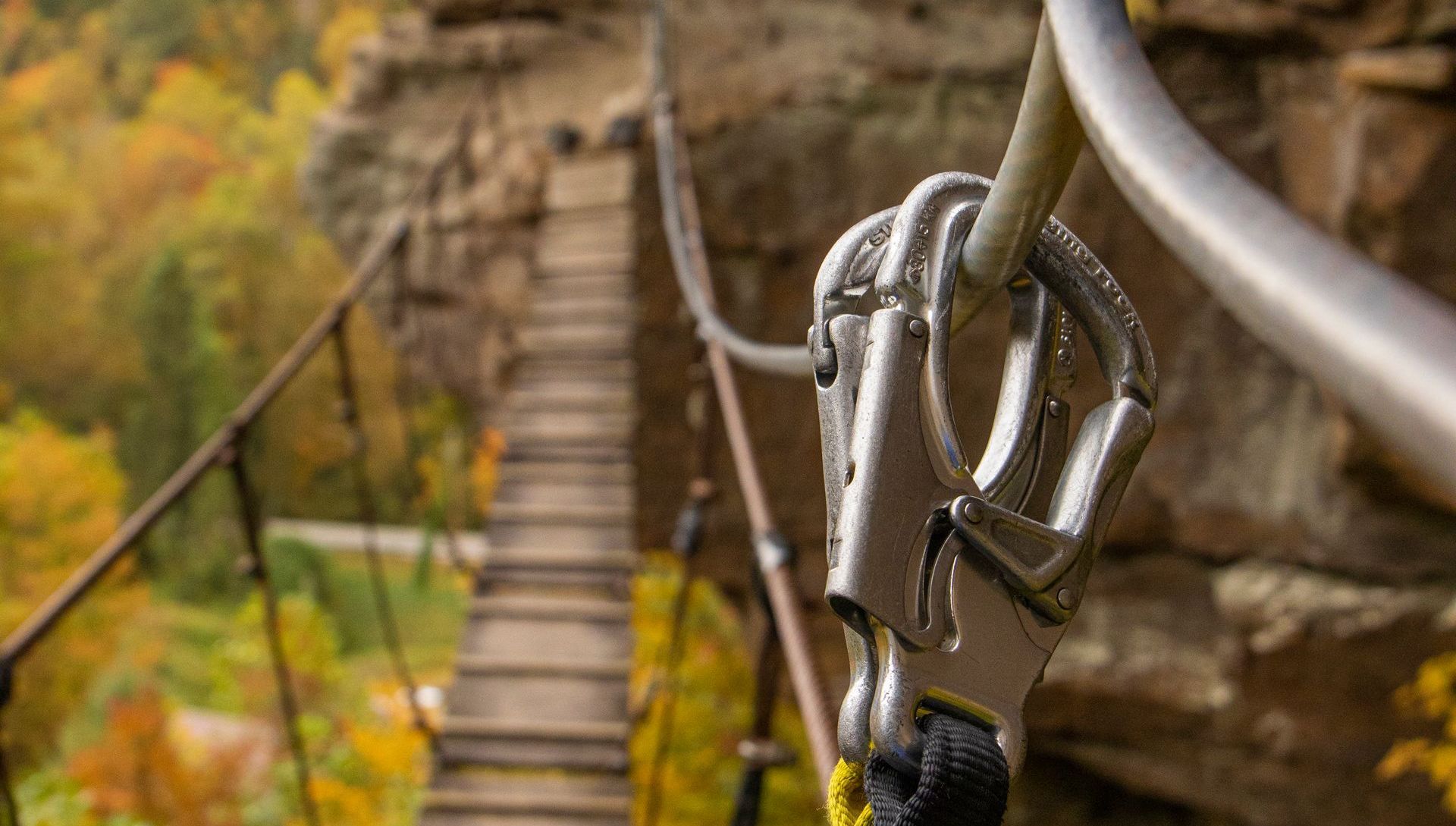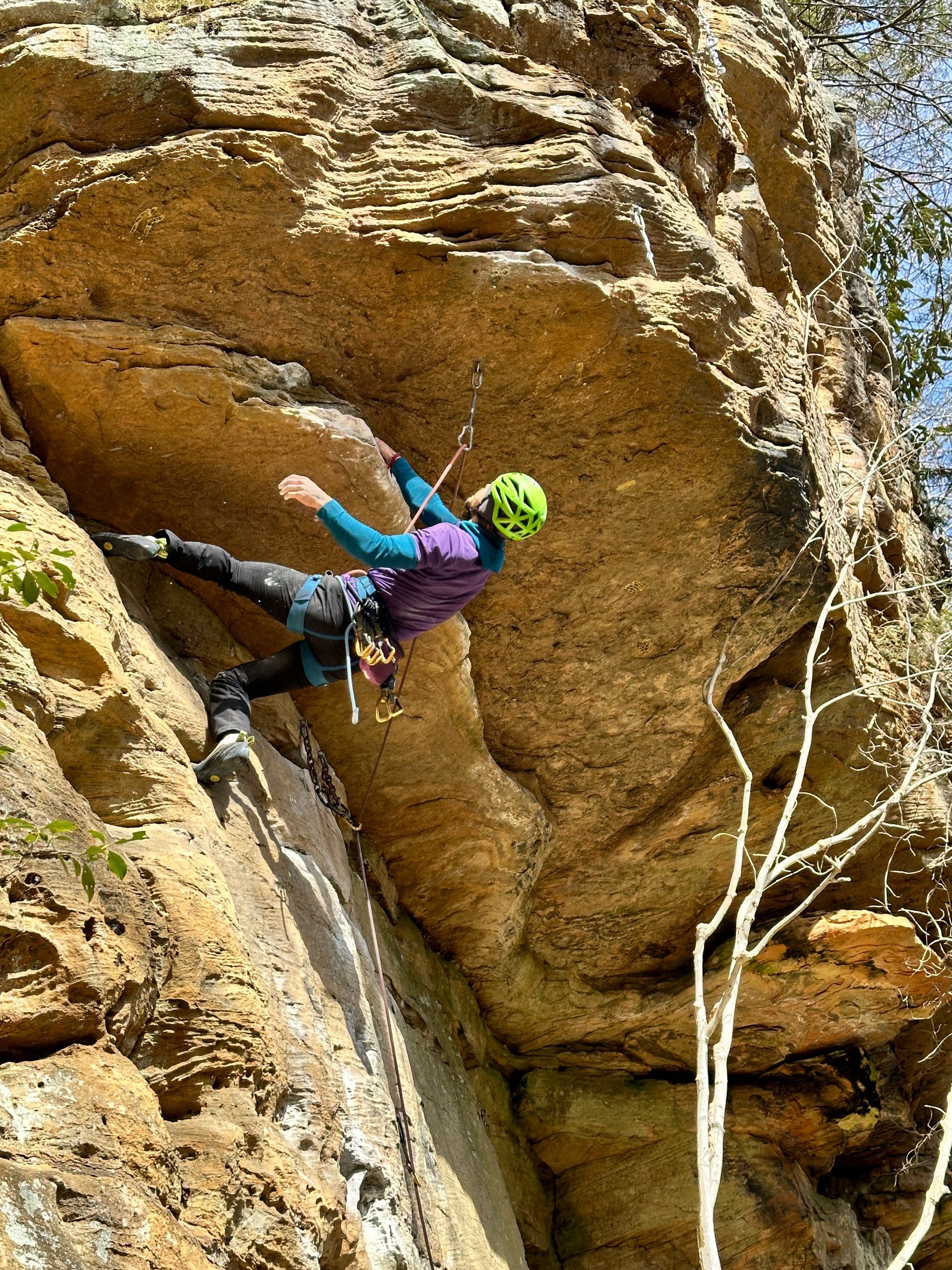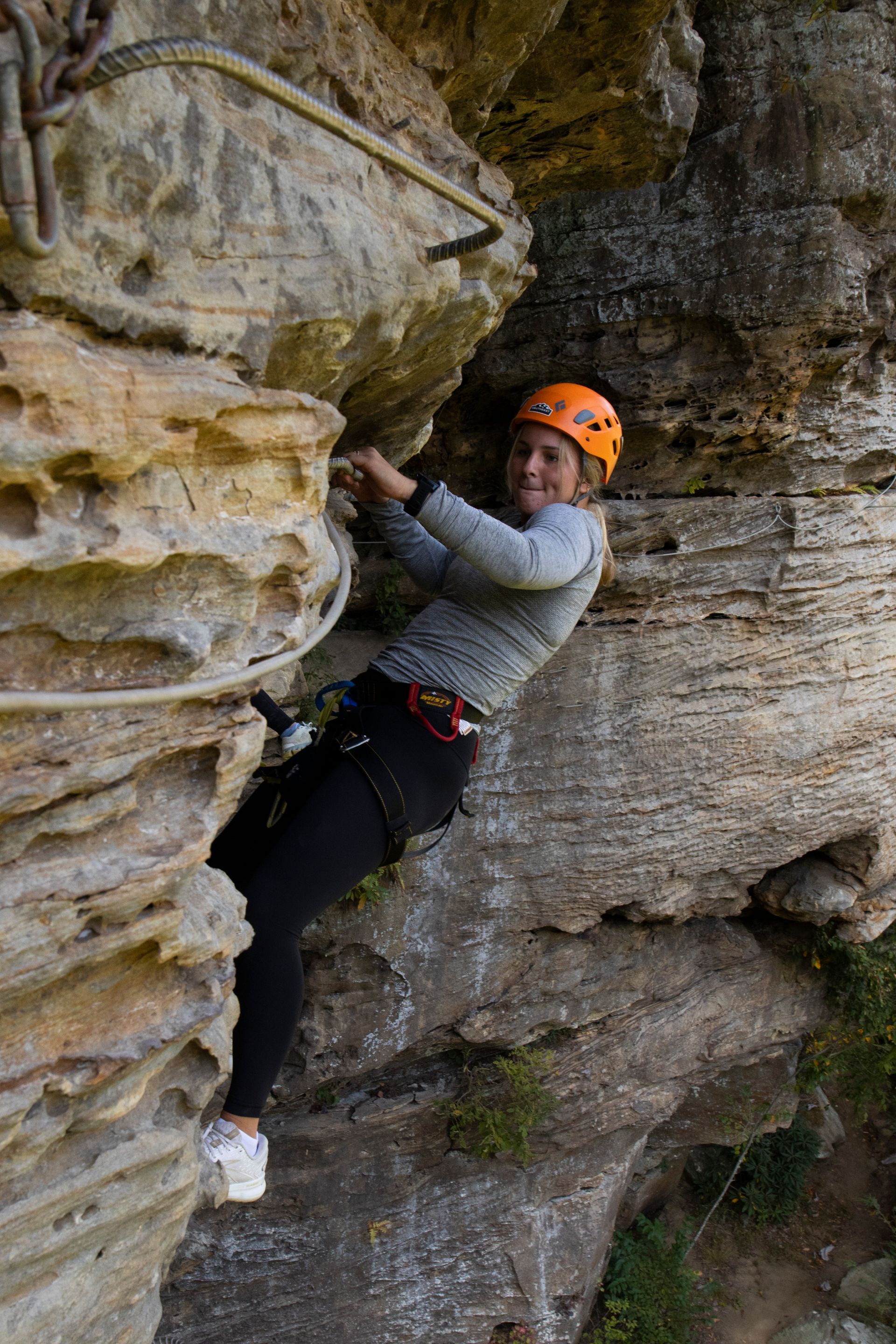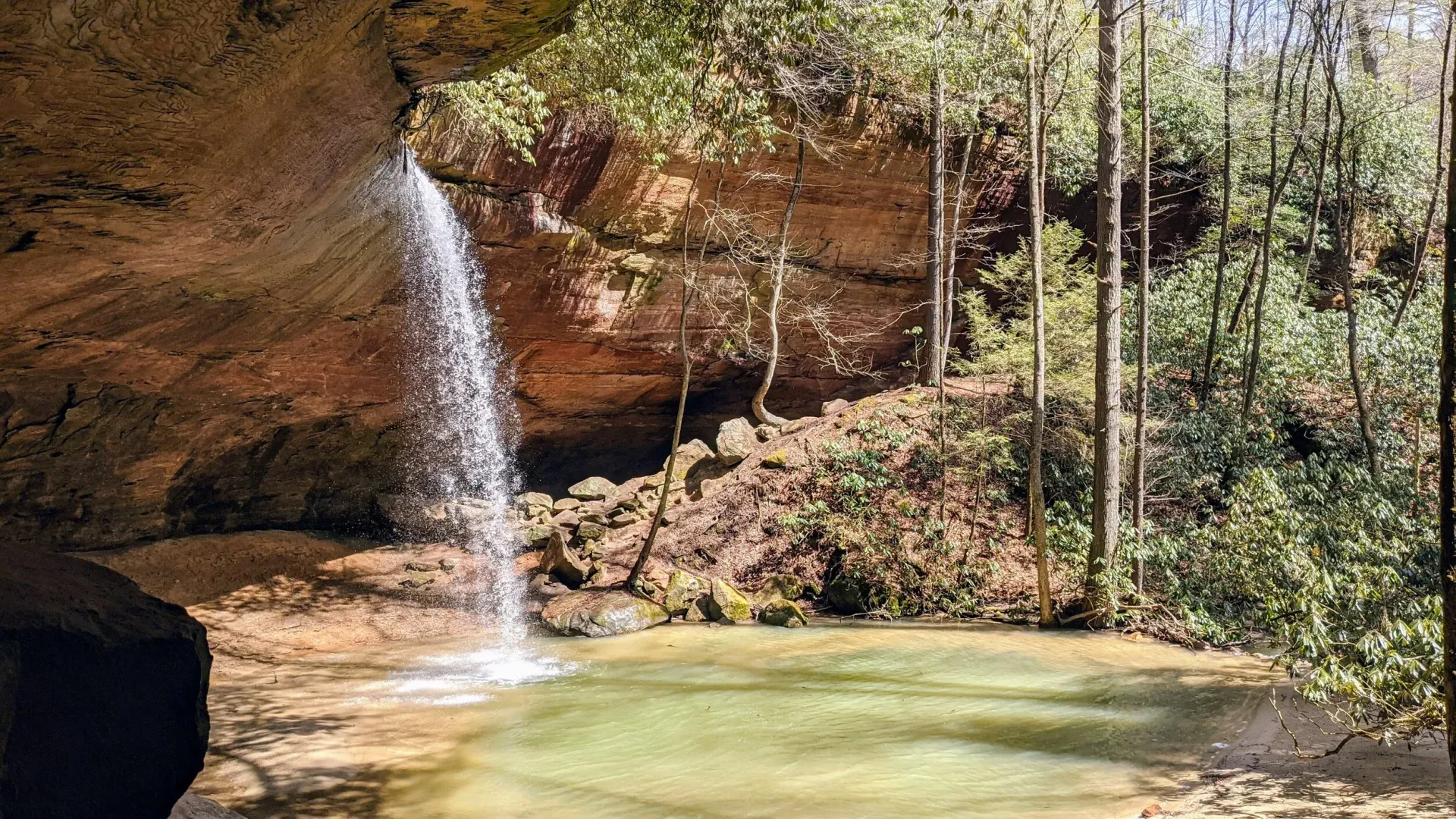The First Via Ferrata in the USA: A Red River Gorge Climbing Legacy
The History of the First Via Ferrata in the United States
Tucked into the sandstone cliffs of eastern Kentucky, the Via Ferrata at Southeast Mountain Guides holds the unique distinction of being the very first course of its kind in the United States. Long before the concept of a fixed-anchor climbing route was widely recognized here, this trailblazing experience brought a taste of the Alps to the Red River Gorge region and helped redefine what adventure could look like in America.
What is a Via Ferrata?
The term Via Ferrata, Italian for "iron path," originated in the European Alps. These protected climbing routes were originally developed in the early 20th century, with metal rungs, ladders, and cables fixed to the rock to aid soldiers in navigating mountainous terrain during World War I. Over time, they evolved into recreational routes that allow people to experience the thrill of vertical exposure with the support of a secure cable system.
The Vision Behind the First U.S. Via Ferrata
The
story of the first American Via Ferrata began with a vision to make climbing accessible to more people. Mark and Kathy Meyer, the original owners of the historic Torrent Falls property, opened the course on September 1, 2001. They saw an opportunity to create something entirely new: an adventure that offered the exposure and exhilaration of rock climbing but could be safely experienced by people of varying fitness levels and backgrounds.
Inspired by the European tradition, they designed and built a course on private land in Wolfe County, Kentucky. The location—on the historic Torrent Falls property—was already a local landmark, known for its dramatic cliffs, waterfall, and rich climbing history. Constructing a Via Ferrata here was both a nod to the area’s climbing roots and a bold step into a new form of adventure tourism.
Engineering the Course
Designing and building the first Via Ferrata in the U.S. came with its challenges—and a lot of innovation. To ensure the course was both secure and sustainable, the Meyer family brought in a six-person team from France, where the Via Ferrata tradition has deep roots. Two of the team members were geologists who analyzed the sandstone cliff and advised on the safest, best, and most effective route for the course. The remaining four team members handled construction—completing the entire build in just over a month.
Most of the work began from the top of the 100–120-foot cliff. The crew rappelled down to carefully drill placements for the rebar rungs, which serve as footholds and handholds for climbers. Each rung was then secured using a specialized epoxy—think of it as an incredibly strong, rock-safe glue—that permanently bonds the steel to the sandstone. The same meticulous approach was used to install the safety cable. The team threaded the cable through a series of bolts and clamped it securely around each one to create a continuous protection system that climbers clip into as they move along the course.
The result is a Via Ferrata route that blends French engineering with Kentucky grit—durable, thoughtfully designed, and still delivering a thrill decades later. The route now features just over 3,400 feet of cables and iron rungs, ascending and traversing a dramatic sandstone cliffline with sweeping views of the surrounding forest.
This approachability opened the door to adventurers who might not otherwise try climbing—families, school groups, Scout troops, and curious first-timers.
An Experience Unlike Any Other
Since opening, the Via Ferrata has become a beloved feature of the Red River Gorge region. It offers an experience that is simultaneously accessible and unforgettable, challenging and deeply rewarding. Climbers encounter suspension bridges, airy traverses, and dramatic vertical ascents—all while surrounded by the natural beauty of Kentucky’s iconic sandstone cliffs.
The course continues to keep climbers engaged, even decades after its creation. Slightly more physically demanding than many other Via Ferrata routes, it delivers a genuine sense of adventure. At the same time, numerous exit points throughout the course give participants the option to take a break or shorten their route, allowing each experience to be tailored to the individual.
The success of the course not only transformed the area into a destination for adventure-seekers but also set the stage for other Via Ferrata routes to be built across the country. What began as a unique local experience has inspired a movement, introducing thousands to the vertical world in a way that’s fun, memorable, and empowering.
Legacy and Leadership
As the first of its kind in the U.S., the Via Ferrata at Southeast Mountain Guides remains a pioneer—not just because of its history, but because of its continued commitment to quality, stewardship, and community. Over the years, the team has maintained the course, trained countless guides, and introduced new generations to the joy of vertical adventure.
In time, ownership of the business passed to Mark and Kathy’s daughter, Nicole Meyer, who brought new energy and vision to the operation. Under her leadership, the business was renamed Southeast Mountain Guides, reflecting a broader focus that included not only the
Via Ferrata but also guided climbing and rappelling adventures throughout the region.
- “Growing up around this course, I watched people discover something new in themselves every time they clipped in. Taking over the business was a way to honor what my parents built, while continuing to share this incredible experience with more people. It’s not just about the climb—it’s about connection, challenge, and the sense of awe this place inspires.”
— Nicole Meyer, Owner of Southeast Mountain Guides
Today, as Via Ferrata courses become more popular nationwide, Southeast Mountain Guides continues to lead by example. The story of America’s first Via Ferrata is one of vision, innovation, and a deep respect for both the land and the spirit of exploration. And it all started here, in the cliffs above Torrent Falls.
